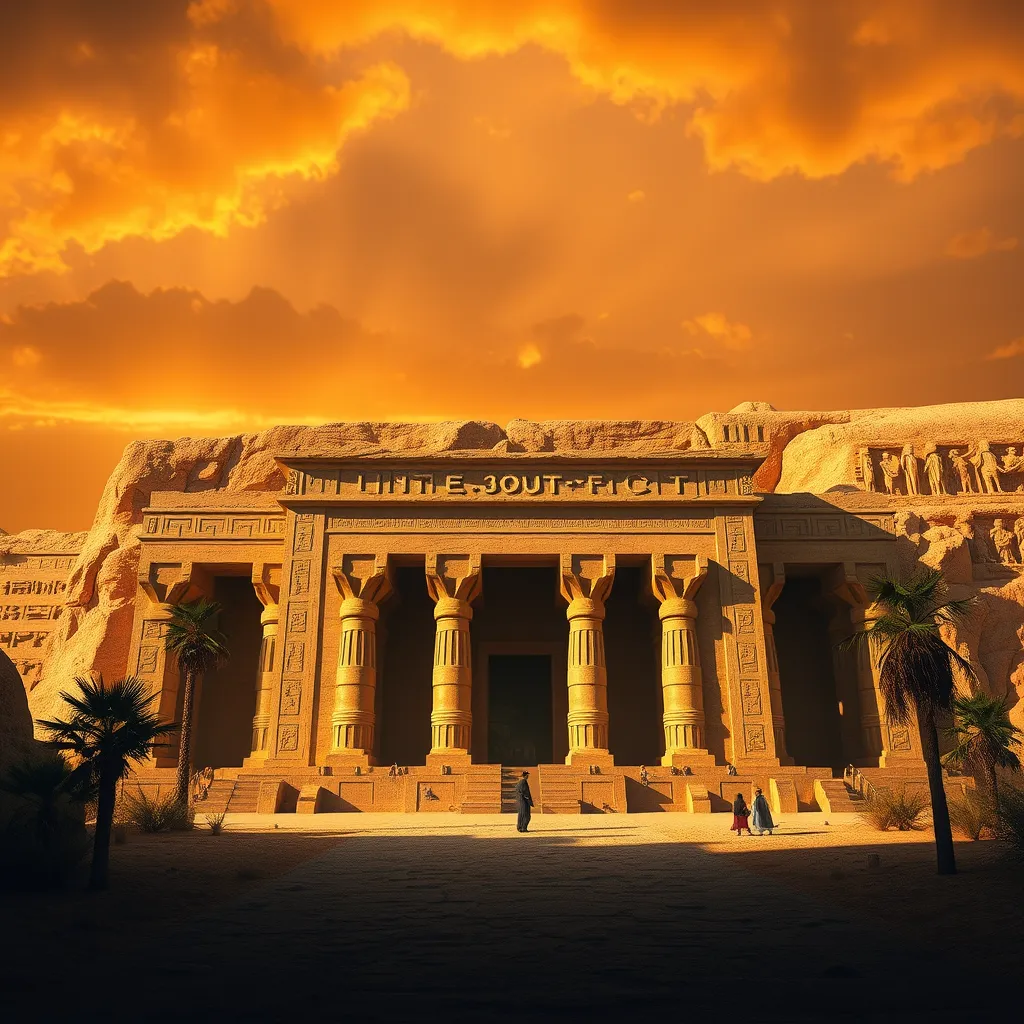From Sand to Sanctuary: The Rise of Egyptian Temples
I. Introduction: The Significance of Temples in Ancient Egypt
Temples in ancient Egypt were much more than mere buildings; they were the heart of the civilization’s religious and cultural life. These sanctuaries served as places of worship, community gathering, and centers of economic activity. By exploring the evolution of temple architecture, we can better understand their significance in the ancient Egyptian worldview.
II. The Historical Context: Egypt’s Religious Landscape
Ancient Egyptian religion was characterized by a rich pantheon of gods and goddesses, each embodying various aspects of life and the natural world. Major deities included Ra, the sun god; Osiris, the god of the afterlife; and Isis, the goddess of magic and motherhood. The pharaohs, considered divine intermediaries between the gods and the people, played a crucial role in the construction and maintenance of temples.
These monumental structures were seen as homes for the gods on earth, and the pharaoh’s duty was to build and uphold these sacred sites, ensuring the favor of the deities and the prosperity of the land.
III. Architectural Innovations: From Simple Structures to Monumental Designs
The evolution of temple architecture in ancient Egypt showcases remarkable innovation. Early temples were simple structures made of mud brick. However, as Egyptian society advanced, so too did their architectural ambitions.
- Materials Used: The transition from mud bricks to stone, particularly limestone and sandstone, marked a significant milestone in temple construction.
- Architectural Features: Key features of Egyptian temples include massive stone columns, vast courtyards, and intricate carvings that depicted religious scenes and hieroglyphics.
These innovations not only reflected the technical skills of architects and laborers but also embodied the religious significance of the temples, serving as symbolic gateways between the earthly realm and the divine.
IV. Major Egyptian Temples and Their Stories
Throughout ancient Egypt, several temples stand out for their grandeur and historical significance:
- Karnak Temple: Located in Luxor, Karnak is one of the largest temple complexes in the world, dedicated primarily to the god Amun. Its vast halls and towering obelisks are a testament to the architectural prowess of ancient Egyptians.
- Luxor Temple: Also situated in Luxor, this temple is famous for its magnificent statues and the annual Opet Festival, which celebrated the rejuvenation of the pharaoh.
- Abu Simbel: Carved into a mountainside during the reign of Ramses II, this temple complex features colossal statues of the pharaoh, symbolizing his power and divine protection.
Each temple tells a unique story, reflecting the cultural and political dynamics of its time, as well as the devotion of the ancient Egyptians to their gods.
V. Temples as Centers of Community and Economy
Beyond their religious functions, temples served as vital centers of community life. They were hubs for social interaction, education, and economic activity.
- Social Role: Temples provided services to the community, including healthcare and education, fostering a sense of unity among the people.
- Economic Activities: Temples owned vast tracts of agricultural land and engaged in trade. They facilitated the distribution of resources and goods, contributing significantly to the economy of ancient Egypt.
Thus, temples were not only spiritual sanctuaries but also integral to the daily lives of the Egyptians, influencing both their economy and social structure.
VI. Religious Practices and Rituals within Temple Walls
The temples were alive with rituals and ceremonies, essential for maintaining the cosmic order, known as Ma’at. Daily rituals included:
- Morning Rituals: Priests would greet the rising sun with offerings and prayers, ensuring the god’s presence in the temple.
- Festivals: Major festivals, such as the Opet Festival, involved processions and communal celebrations to honor the gods and the pharaoh.
- Priestly Duties: Priests played a pivotal role in conducting rituals, maintaining temple cleanliness, and ensuring the offerings were presented correctly.
These practices were vital for the spiritual health of the state, reflecting the deep interconnection between religion and governance in ancient Egypt.
VII. Decline and Transformation: The Fate of Egyptian Temples
As Egypt transitioned through various periods, the relevance of temples began to decline. Several factors contributed to this shift:
- Foreign Invasions: The conquests by foreign powers, such as the Persians and later the Greeks and Romans, led to the neglect and repurposing of temples.
- Religious Changes: The rise of Christianity and the decline of traditional Egyptian beliefs resulted in the transformation of many temples into churches and other structures.
Despite these changes, many temples adapted and continued to serve as important sites of worship and community life, reflecting the dynamic nature of religious practice over time.
VIII. Legacy and Modern Relevance: Preserving Egypt’s Temple Heritage
The temples of ancient Egypt continue to resonate in modern society, forming an essential part of Egypt’s cultural heritage and national identity. Their majestic ruins attract millions of tourists each year, contributing significantly to the economy.
Efforts in archaeology and conservation are ongoing to preserve these historical treasures for future generations. Organizations and governments are working collaboratively to ensure that the stories of these temples and their cultural significance are not lost to time.
In conclusion, the rise of Egyptian temples from humble structures to monumental sanctuaries is a testament to the rich tapestry of ancient Egyptian civilization. Their architectural, social, and religious importance continues to inspire awe and admiration, making them a vital part of our shared human heritage.




